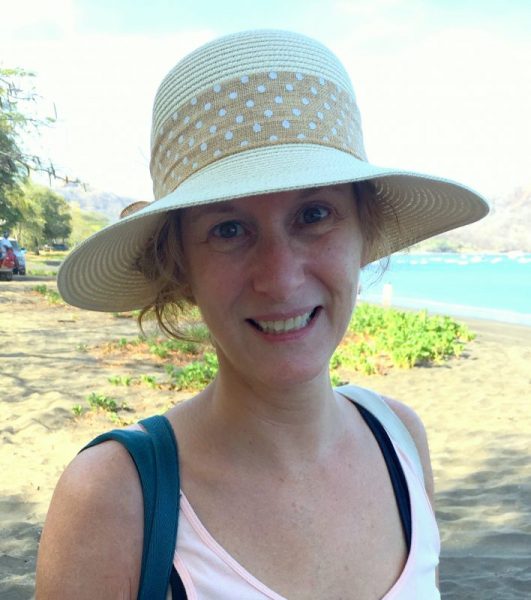DEC Walks Back Potential Remediation of PV Contaminated Wells
News Based on facts, either observed and verified directly by the reporter, or reported and verified from knowledgeable sources.
Putnam Valley homeowners alerted in March that their wells were contaminated recently received letters from the state Department of Environmental Conservation (DEC) walking back a promise to install a water filtration system at no cost.
Property owners who live near a landfill on Oscawana Lake Road and had wells that were deemed to have unacceptable levels of polyfluoroalkyl substances (PFAS) were offered free bottled water and installation of a water filtration system. That decision followed a report titled Putnam County Fire Department Landfill Private Well Assessment (Area Site No. 2309855).
The site is where 17,000 cubic yards of contaminated fill and hazardous materials were illegally dumped in 2016 and is the property where a new firehouse is being built by the Putnam Valley Volunteer Fire Department.
Those receiving the DEC letters live directly down the road from the landfill on Kramers Pond Road, Harimac Road, Dogwood Lane and Briar Ridge Lane. Last year PFAS contaminants were found in residential drinking water at Floradan Estates, also downhill from the firehouse construction site.
David Chiusano, DEC project manager for the Remedial Bureau who is leading the water contamination investigation, denied that the March letters implied the fire department landfill was the source of contamination. He sent a total of 22 letters to homeowners over a three-week period.
“I decided a closer look at the data found in private wells was needed,” Chiusano said.
“After sending out the first 10 letters to homeowners, it became clear to me that we don’t really know the source,” he added. “Three weeks later we sent out 12 more letters that clarified our uncertainty of the source. It was me, as the project manager, saying the first letter wasn’t adequate enough, in my opinion.”
The follow-up letter Chiusano sent in early May said “the continued provision of bottled water and subsequent installation of a POET (Point of Entry Treatment water filtration) system is dependent upon the DEC’s completion of their evaluation of area groundwater and the State’s determination that the source of contamination is originating from an existing site or spill.”
The POET system can cost anywhere from $7,500 to $35,000 to install.
The letter goes on to say if the ongoing investigation shows contamination comes from domestic wastewaters from septic systems, use of fertilizers or other surface water infiltration, “the temporary provision of bottled water will cease, the provision of a POET system will not occur.”
Until a report confirms where the contamination is coming from, Chiusano said homeowners would continue receiving bottled water. The DEC expects to eventually identify the source of contaminants for the homeowners.
This is not the first time the DEC has reneged on protective action on this issue. After the fire department admitted to violations at the site on Jan. 19, 2019, a DEC Order of Consent was issued, which apparently ignored that the site was within a Ground and Surface Water Protection District, a sensitive area that is under the jurisdiction of the town prohibiting the disposal of hazardous materials or solid waste as defined by the DEC.
The DEC consent order and remediation plan for the fire department called for solid waste material at the landfill to remain in place and be “capped” with a soil layer, allowing the contaminated fill to remain. Therefore, the DEC ignored its own consent order stipulating the fire department comply with all federal, state and local laws to completely remove the fill.
However, by capping the contaminated fill instead of removing it, the site is now being investigated as a primary cause of contamination of nearby homeowners’ wells.
Requests by concerned community members asking the DEC to explain the decision to leave contaminated fill in the ground have been ignored.
After the 2016 illegal dumping by the fire department, the DEC had at least five monitoring wells dug nearby. Chiusano said he would check the eight-year-old monitoring wells to see when they were last tested and if a report was issued with test results. He also said the ongoing investigation may require digging new monitoring wells in the area.
“We may need more monitoring wells to supplement what we have now so digging new wells is not out of the question,” Chiusano said.
According to Chiusano, letters will be sent out to the 22 homeowners by the end of the month asking permission to test their wells again. At the end of the investigation, a new report will be issued but Chiusano said he wasn’t sure how long it will be before the final report is shared with the public.
“Depending on the conclusion of the investigation and if it’s determined that the source of the contamination comes from the landfill, a long-term solution will be needed,” Chiusano said. “Internal reports have to be reviewed by management to make sure they are written in a certain manner. It takes time. We are not walking away from this project and we understand the concern and feedback we are getting from the community, but we want to make the proper determination.”
PFAS substances in the water and environment is known to cause kidney and testicular cancer, liver and thyroid problems, reproductive problems, pregnancy-induced high blood pressure, low birthweight and increased risk of birth defects, among other potential health problems.
Questions relating to the DEC’s alternative water supply can be directed to Ian Hofmann of Environmental Assessment & Remediations at 631-241-8741 or IHofmann@enviro-asmnt.com or to David Chiusano at 518-402-9813 or david.chiusano@dec.ny.gov.

Abby is a seasoned journalist who has been covering news and feature stories in the region for decades. Since The Examiner’s launch in 2007, she has reported extensively on a broad range of community issues. Read more from Abby’s editor-author bio here. Read Abbys’s archived work here: https://www.theexaminernews.com/author/ab-lub2019/
